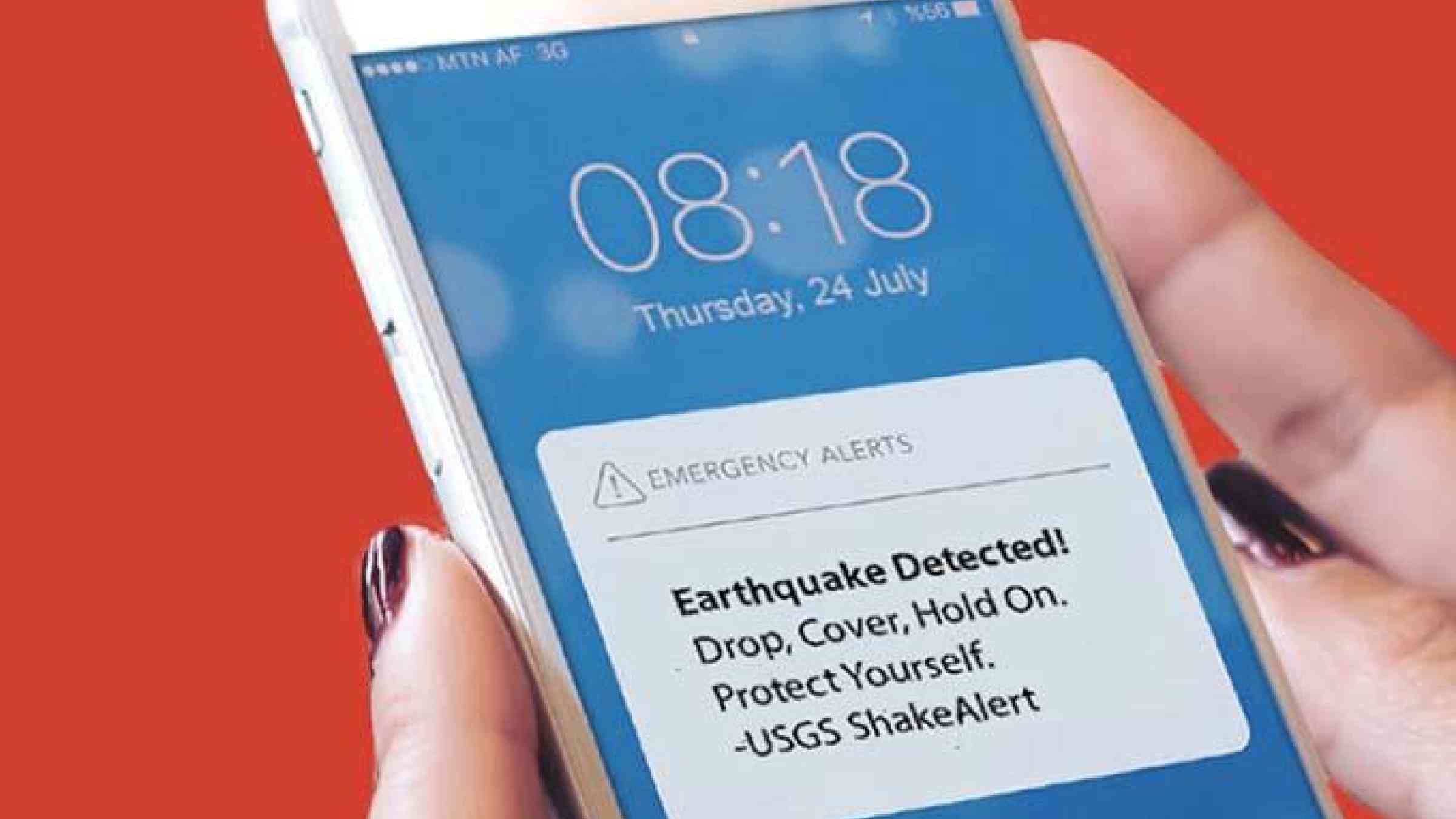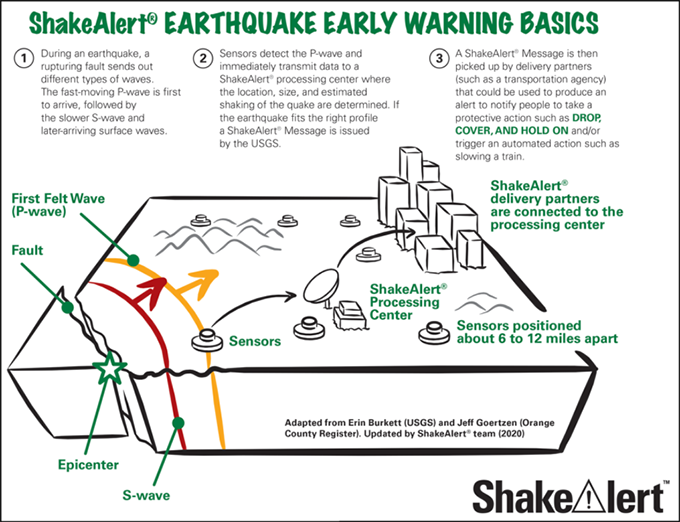Earthquake alerts go live in the Pacific Northwest

Oregon and Washington residents will receive an alert on their cell phones if they are in danger from an incoming quake.
By Jenessa Duncombe
A warning saying “Earthquake Detected! Drop, Cover, Hold on. Protect Yourself” will now appear on cell phones across the Pacific Northwest in the event of an imminent earthquake. The goal of the system, led by the U.S. Geological Survey (USGS), is to give residents enough time to find safety or to halt important services before shaking arrives.
Most cell phone users are automatically opted in for the service. The ShakeAlert system went live on 11 March in Oregon and will launch on 4 May in Washington. California unveiled the service in October 2019.
Some people aren’t sure whether they’re feeling an earthquake and wait to act rather than seeking cover.
ShakeAlert now extends to 50 million people along the U.S. West Coast, covering one of the most seismically hazardous regions of the United States. A major earthquake in one of the West Coast’s largest cities—Seattle, Portland, San Francisco, and Los Angeles—could put millions of people at risk and harm the nation’s national security and economy.
Residents may receive the ShakeAlert warning before, during, or after an earthquake, depending on where they are relative to the quake. Alerts before an earthquake may give just a few seconds to tens of seconds of warning. Although a few seconds’ warning may not sound like much, it’s enough time to hide under a table or desk, lock wheelchair wheels, or place a pillow over your head in bed, said Emily Holland, a public policy specialist for California’s Office of Emergency Services.
ShakeAlert notifies residents if they are in the affected area of an earthquake of magnitude 5 or above (the threshold when most people feel at least light shaking). The alerts come from seismic sensors in the Pacific Northwest Seismic Network positioned throughout the region. If a group of sensors detects strong shaking, it sends the information to a processing center, where algorithms determine the location and magnitude of the earthquake, then send out alerts to people in the affected areas.
Receiving a warning during an earthquake can still be helpful, said Holland. Some people aren’t sure whether they’re feeling an earthquake and wait to act rather than seeking cover. Although some earthquakes may last only seconds, strong quakes can go on for more than 45 seconds.
 Source: USGS
Source: USGS
ShakeAlert uses the Wireless Emergency Alerts (WEA) system that sends out weather alerts and Amber Alerts. Most cell phones automatically receive WEA alerts, but Oregon.gov has instructions to turn on the service if it has been disabled.
People can also download a mobile application called MyShake from their phone’s Apple or Google stores for free. The app sends alerts for incoming earthquakes just like WEA, but it may deliver alerts faster. MyShake sends alerts for slightly smaller earthquakes (4.5 magnitude or above). Android users can receive alerts through Google’s operating system as well.
The USGS partnered with the University of Washington and the University of Oregon as well as the states’ emergency management agencies to bring the system to fruition.
Robert de Groot, the ShakeAlert national coordinator for communication, education, and outreach for the USGS, said the next step will be working with industry to integrate early warnings into water systems, health care, and transportation. Automated actions triggered by ShakeAlert could include halting surgery, shutting off utilities, and slowing trains. In California, the Bay Area Rapid Transit system uses alerts to slow and stop trains when earthquakes occur, and Los Angeles County hospital Cedars-Sinai issues alerts over the public address system for nurses and doctors to take protective action. “We are trying to encourage the build-out of the earthquake early warning industry.”